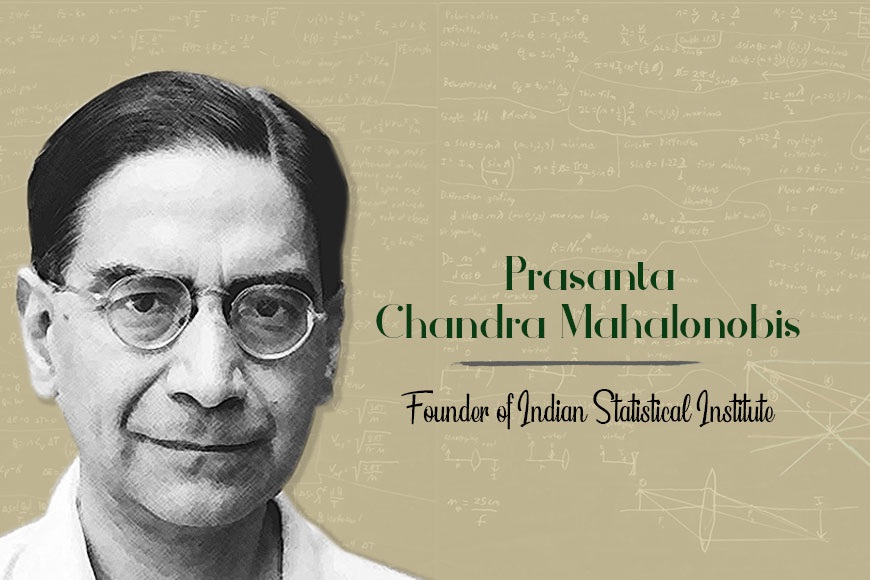Since 2007, June 29 has been designated as the ‘National Statistics Day’ to commemorate the birth anniversary of late Prof Prasanta Chandra Mahalanobis, who is known as the ‘Father of Indian Statistics’.
This year, India is celebrating the 17th National Statistics Day on the theme of ‘Aligning of State Indicator Framework with National Indicator Framework for Monitoring Sustainable Development Goals.’
The Sustainable Development Goals (SDGs) have become the template of development policy. The SDGs are to be achieved over the period 2015-30.
A lot of data is required to monitor the progress of 17 SDGs over time and across regions. Sophisticated statistical methods need to be employed in the construction of SDG indices at national and state level.
For effective monitoring of the progress about SDGs, a national indicator framework along with state indicator framework has been designed by India’s federal think tank the NITI Aayog, and respective state governments. In this respect statistics has a very significant role to play.
Father of Indian Statistics
Mahalanobis held the view that statistics could play an important role in national planning and development. But he was not an ivory-tower intellectual. He showed that scientific methods can be fruitfully used for finding solutions to practical problems and in decision making for the general welfare of the society.
For his pioneering work in diverse fields and laying the foundation of a strong statistical institutional set up in India, he is rightly called as the ‘Father of Indian Statistics.’ The Government of India in 2006 decided to designate his birth anniversary as the ‘National Statistics Day’ and is being celebrated as such since 2007.
Builder of Institutions
Mahalanobis in 1931 established the Indian Statistical Institute (ISI) in Calcutta. The ISI is now recognised as a premier institution of research and education in the field of statistics and quantitative studies in social sciences. He also started the publication of the journal ‘Sankhya’ in 1933.
On his initiative ‘National Sample Survey’ now known as NSO was founded in 1950. This is the main organisation to conduct national level socio-economic surveys including the ones used for estimation of poverty and unemployment in the country. He was also instrumental in setting up of the Central Statistical Organisation (CSO) in 1951, the apex body in India to coordinate statistical activities and work of other state statistical organisations.
Now both these organisations have been merged into a single entity called National Statistical Office (NSO) working under the Ministry of Statistics and Programme Implementation (MOSPI), GOI.
Mahalanobis was also instrumental in the preparation of the national income accounts. In fact, a Committee under the Chairmanship of Mahalanobis was formed in 1949 to prepare the methodology and a system of national income accounting. The present system of estimation of national income and other related aggregates like GDP etc, is largely based on the recommendations of this Committee.
Early Life and Academics
Born in 1893 to an academically oriented family, Mahalanobis completed his early education in Calcutta. He graduated with honours in physics from Presidency College, Calcutta, in 1912. Later on he moved to England to study physics and mathematics at the University of Cambridge and completed his Tripos in these subjects.
Just before his return to India, one of his teachers introduced him to the journal ‘Biometrika’ which was founded by great statistician Karl Pearson. Mahalanobis found its articles interesting and he bought a whole lot of the volumes of the journal and came back to India. This was his first exposure to applied statistical work which was to become his lifelong field of research. Upon coming back to India Mahalanobis joined the department of physics, Presidency College, Calcutta where he rose to become a Professor and Head of the department.
Contributions in Statistics
Mahalnobis’ first foray in applied statistical work was in anthropology. He analysed the anthropometric data pertaining to Anglo-Indians of Calcutta. Later, in collaboration with Prof D N Majumdar of the department of Anthropology, university of Lucknow, Mahalanobis analysed the anthropological data pertaining to castes and tribes of Uttar Pradesh. The relevant data was collected along with the Census of 1941. Mahalanobis also ventured into meteorology and problems of flood control. In his work as an applied statistician, Mahalanobis was always innovative and methodical in finding answers to practical problems.
He made enormous contributions in the discipline of statistics but three of his works in this area are considered as seminal. The first relates to his work on anthropometric surveys and discovery of a method of comparing and grouping populations using a multivariate distance measure. This measure denoted by’D^2’ has now been named as ‘Mahalanobis Distance’ which is independent of measurement scale.
The second important contribution of Mahalanobis was in the field of conducting large scale sample surveys. He began his work on sample surveys by estimating area and crop yield of jute crop in Bengal. During his other such studies he made many innovative methodological contributions in the field of survey sampling including optimal choice of sampling design. His idea of pilot survey is considered as a precursor to sequential sampling which was developed by A Wald. Mahalanobis’ third important contribution in statistics was the method of ‘fractile graphical analysis’ which could be used for comparison of socio-economic conditions of different groups of people.
As a National Planner
Although Mahalanobis was not a trained economist, he is well known for his model of planning- ‘Mahalanobis Model’ and this was the basis of the Second Five Year Plan (1956-61) of India. The model has two versions- one, a two-sector model and a four- sector model. The industrialisation strategy which was the outcome of his model laid emphasis on the promotion of heavy industries and giving priority in investment to capital goods sector.
He proved mathematically in his model, that this strategy, sometimes called ‘Heavy Investment’ strategy would lead to faster growth of the economy in the long run. In this strategy public sector was also given a prominent role. In retrospect, the results of this strategy might have not been spectacular but it laid the foundation of a diversified industrial structure in India and helped to a great extent in achieving the objective of self-reliance.
Mahalanobis was a member of the Planning Commission of India during 1955-1967. He also held the post of Honorary Statistical Advisor to the Government of India since 1949 till his death in 1972.
International and National Recognition
Mahalanobis held many international and national positions during his illustrious career. He served as the Chairman of the United Nations Sub-Commission on Statistical Sampling from 1947 to 1951. He was a fellow of Royal Society of London, Fellow of the American Statistical Association, and Honorary President of the International Statistical Institute. In 1968 Mahalanobis was awarded the country’s second highest civilian honour the ‘Padma Vibhushan’ for his contribution to science and service to the nation.
He was not only a scientist of repute but also had an abiding interest in cultural and educational pursuits. He was very close to Noble Laureate Rabindranath Tagore and helped him in establishing and running of the Visva- Bharati University at Shanti Niketan.
In today’s world where the ‘Big Data Analytics’ has emerged as a niche area of research, and ‘Data is new oil’ of the economy, his works and innovative approach find a contemporary resonance.
Mahalanobis’ advocacy of industrialisation being given priority and his vision of a strong self-reliant India had been proven correct as now policy makers have given a renewed emphasis to manufacturing by launching the ‘Make in India’ programme and more recently ‘Aatmanirbhar Bharat Abhiyan’.
Podcast: India’s Annual Budget 2023-24
Prof Mahalanobis was an intellectual giant of his time and he had left a rich legacy of work that will continue to guide and inspire the present and future generations of researchers, scientists and policy makers.
(The author is Former Head, Department of Economics. Lucknow University (LU). yashvir.tyagi@gmail.com)

